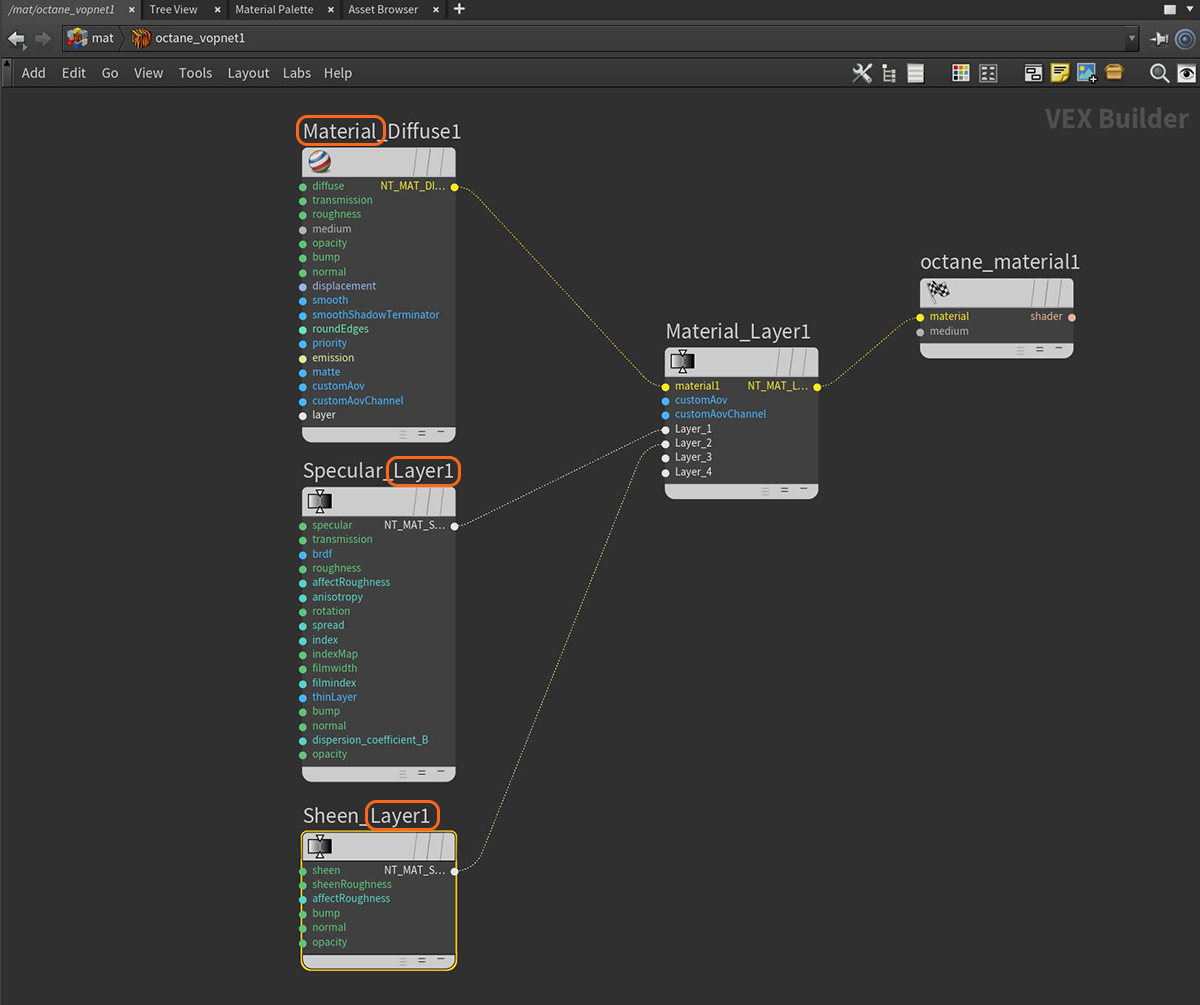
The Layered material node constructs complex materials that consist of a base layer and up to eight MaterialThe representation of the surface or volume properties of an object. Layers (Figure 1). You can create complex materials in a physically-based manner, as opposed to manually mixing materialsUsed to mix any two material types. together. The Material Layer node can be connected directly to the Material pin on an Octane Material node. Only a material can be connected to the Material pin and only Material layers can be connected to the Layer pins. With the Layered material, you are given all Material Layers used in OctaneRender®, allowing you to reconstruct pre-existing Octane materials or your own uber-material.

Figure 1: The Layered Material with a Diffuse materialUsed for dull, non-reflecting materials or mesh emitters. as the Base Material and a Sheen and SpecularAmount of specular reflection, or the mirror-like reflection of light photons at the same angle. Used for transparent materials such as glass and water. Layer as the Layer Inputs
Layered Material Parameters
Base Material - The material (Material 1) that sits below any additional Material Layers.
Pin Count - The Material Layer inputs.
Custom AOV - Writes a mask to the specified custom AOV.
Custom AOV Channel - Determines whether the custom AOV is written to a specific color channel (R, G, or B) or to all the color channels.